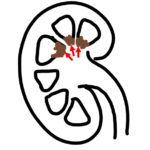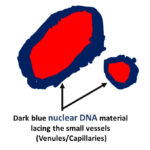URINOMETER
URINOMETER 1. What is urinometer? Urinometer is an instrument used to measure the specific gravity of urine. 2. What are the parts of Urinometer There are three parts of urinometer. They are as
Read MoreRENAL PAPILLARY NECROSIS
Renal Papillary Necrosis 1. What is Renal Papillary Necrosis Renal papillary necrosis is a condition where there is death of the renal papillae. These papillae can be necrosed either partially or
Read MoreBenign Prostatic Hyperplasia (BPH)
Benign prostatic Hyperplasia ( BPH) 1. What is Benign prostatic Hyperplasia ( BPH) Benign prostatic hyperplasia (BPH) is the most common cause of prostatic enlargement which results from proliferation
Read MoreESBACH’S ALBUMINOMETER
ESBACH'S ALBUMINOMETER 1. Describe the instrument Esbach’s Albuminometer This is a glass tube with markings. Two markings are seen U&R. U-Urine, R – Reagent. From the base up to the marking “U”,
Read MoreUnderstanding AZZOPARDI PHENOMENON / EFFECT
AZZOPARDI PHENOMENON/EFFFECT This is a phenomenon observed as a histopathological findings where there is lacing of basophilic material around the small blood vessels in certain high grade tumors.
Read MoreSECONDARIES / METASTATIC DEPOSITS IN LUNG
SECONDARIES / METASTATIC DEPOSITS IN LUNG Multiple nodules in the lung parenchyma which are greater than one cm in diameter are most often metastatic deposits from a solid tumor. The nodules are of
Read MoreRosettes in Pathology
Rosettes in Pathology: Rosettes are structures with radial arrangement of cells like that of a rose petals and hence the name "rosette". Presence of these structures are diagnostic of certain tumors.
Read MoreApproach to Anemia in Elderly
APPROACH TO ANEMIA IN ELDERLY Contributing Author Dr Rashmi M V Professor of Pathology Shree Siddhartha Medical College Tumakuru, Karnataka, India Define Anemia Definition: anemia is functionally
Read More







